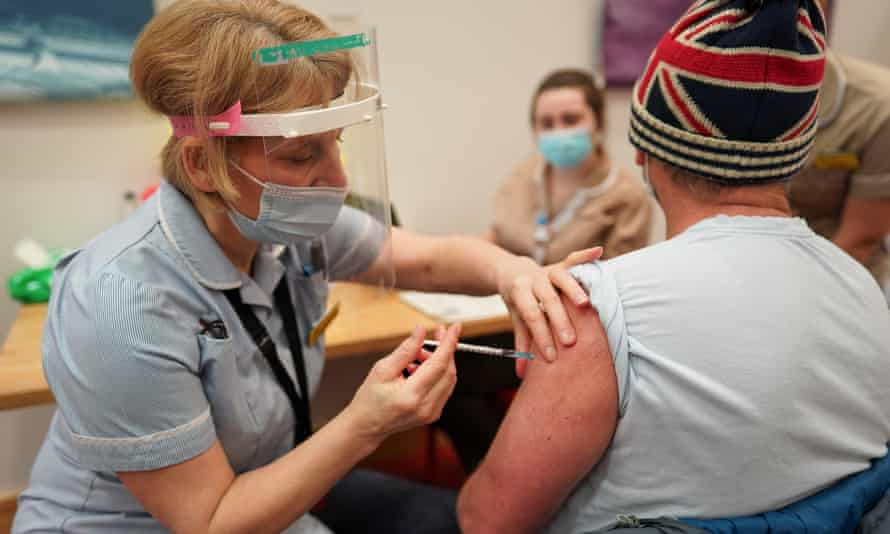I spent Sunday volunteering at a vaccination centre, and I’m seriously worried that some vaccination hubs are at risk of becoming superspreader sites.
The day began at a youth centre. All the volunteers took lateral flow tests, which all came out negative. These detect Covid-19 in only half of asymptomatic people but they are better than nothing. However, once we got into the building, my heart sank.
The whole operation was set up in an indoor basketball court. Half of it was dedicated to vaccinations and the other half was full of blue plastic chairs. There were large windows, but if they could be opened, they weren’t. The only source of ventilation were the doors in and out.
The blue chairs were not quite two metres apart and when we started bringing people in, it got worse.
The NHS guidance says that people should wear surgical masks when coming into the vaccine centre. On the surface, this seems sensible. It is because we don’t know if people have been washing their cloth masks frequently enough. In practice, this means asking elderly people, many with arthritis, to very slowly change masks indoors, surrounded by other vulnerable people.
Once in a centre, a patient goes through four stages. First, the patient queues as someone makes sure they are eligible to join the next queue. Second, they queue to be registered. Third, they queue to be vaccinated. Then, after being vaccinated, they sit and are observed. Each of these queues are rows of chairs, because we cannot expect everyone from the 80+ cohort to stand for too long. Most of these chairs were about a metre and a half from each other.
The average patient going through one of these centres spends a significant amount of time within two metres of about ten different people. This isn’t even accounting for the fact that very vulnerable people often struggle with the system. They walk in the wrong direction, use the bathroom a lot, take their masks off, lean in very close when talking, and often they have carers who add to the room’s body-count.
We gave out about 400 vaccinations yesterday. That’s pretty impressive. Considering how high the infection rate is, and how vulnerable the people we were vaccinating are, we may have saved twenty lives. But I have spent the whole day worrying that, in the process, we may have given an additional twenty coronavirus infections.
We now know that Covid-19 can linger in the air for hours in a poorly ventilated space; we also know that after a physically distanced choir practice in the USA, one Covid-positive person infected a further thirty one singers. The BMJ estimates that a high occupancy, poorly ventilated space, even with face coverings and complete silence, is a high risk. So to gather large numbers of vulnerable people into a poorly ventilated space to be vaccinated seems unwise to say the least.
This is not the fault of the people setting up the vaccine hubs. The woman who was directing volunteers has been working over twelve hours every day this week, working in the centre from 8am to 8pm. She is following the NHS guidance to the letter and knows exactly what she’s meant to do on distances, masks, observation times, and one-way systems.
Public Health England and the NHS could start by updating the guidance on how to run a Covid secure centre. Activities like wiping down the seats for vaccination (but not for queueing), offer minimal value. Instead they should try to move post-vaccination monitoring outdoors. We could try to minimise the number of checks people go through so they decrease their exposure to staff and volunteers. And we could learn from Israel’s example, and start doing drive-through vaccination centre like some of the Covid-test sites.
We’re still in the process of setting up all our vaccination hubs, so there is still time to make adjustments before this gets worse and we end up with full blown outbreaks.
Aria is a policy researcher and the founder of “TheTakeMachine“.










Join the discussion
Join like minded readers that support our journalism by becoming a paid subscriber
To join the discussion in the comments, become a paid subscriber.
Join like minded readers that support our journalism, read unlimited articles and enjoy other subscriber-only benefits.
Subscribe